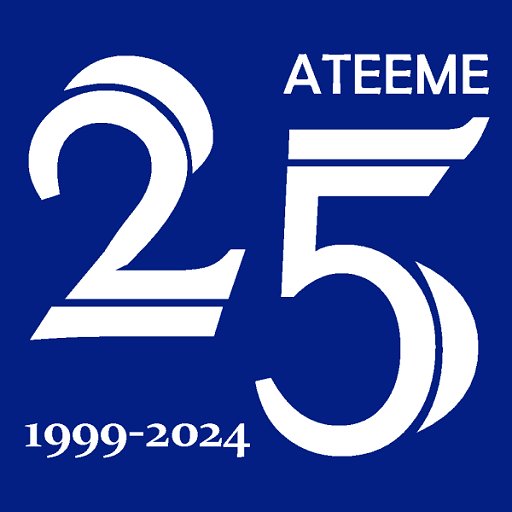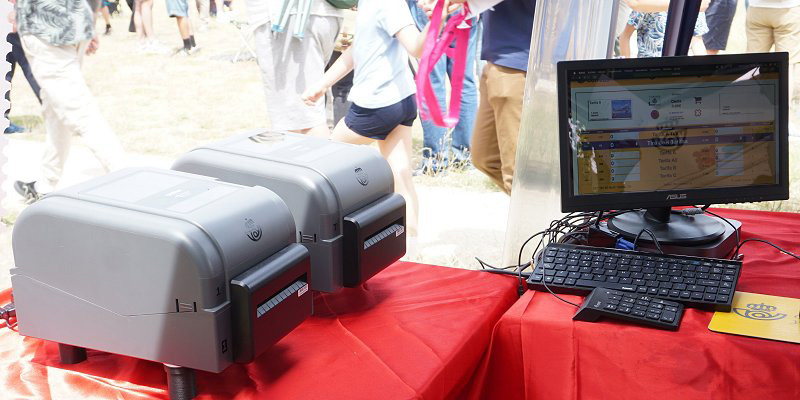June 1st 2025, a very important date for collectors of Spanish variable value stamps. After more than 30 years of issuing stamps using direct thermal printers, the Correos philatelic service has put into service new thermal transfer printers.
Since 1992 all variable value stamps in Spain were issued with Epelsa and Mobba franking scales installed in post offices (see article). The Epelsa LF self-service kiosks were added in 2003 (article), the Intelligent AR kiosk in 2016 (article), and the philatelic service computer system in 2017 (article and image below). All these machines printed the stamps with different models of direct thermal printers from rolls of self-adhesive thermal labels.
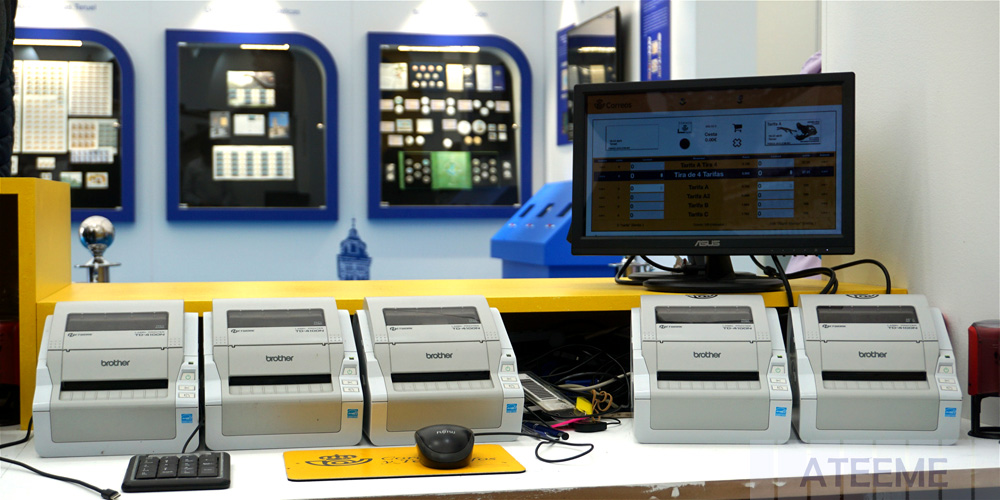
Direct thermal printing uses heat to print directly onto heat-sensitive paper; no ink or ribbon is used, but printing heads “burn” the heat-sensitive pigments onto the surface of the thermal labels, creating the text or images. This type of printing is susceptible to discolouration or fading over time, and its longevity depends on several factors, such as the type and quality of the thermal paper used, the storage conditions, label coatings, environmental conditions, and even the condition of the printers themselves.
The unpredictability about the long term condition of thermal ATMs – even in the medium term – has for many collectors been one of the main reasons against collecting them. We all have had bad experiences in this regard; some of the printed information on stamps printed on the first paper type used in the 1990s, had all but practically faded (images) whilst trials and reprints were still being conducted with different types of paper and coatings.
Over the years, printers used higher quality thermal paper and released blank, uncoated areas in the design for the printing of the data, which contributed to the better longevity of the imprint.
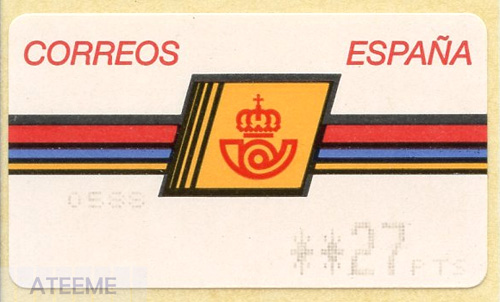
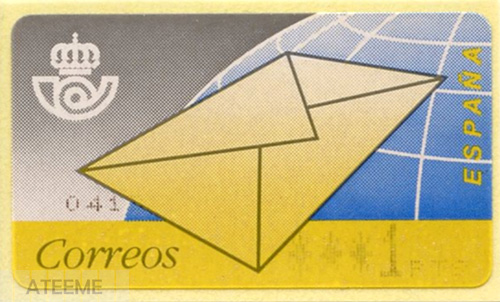
Since 2016 the rolls of thermal self-adhesive labels have been manufactured by Cartor Security Printing in the UK, with long experience in manufacturing this type of medium for several countries. Cartor uses a high quality thermal paper, which enables excellent preservation of most of the stamps printed. Even so, some temporary problems or changes in production have meant that several issues produced in early 2022, for example, are already showing obvious signs of discolouration in the thermal printing (images).
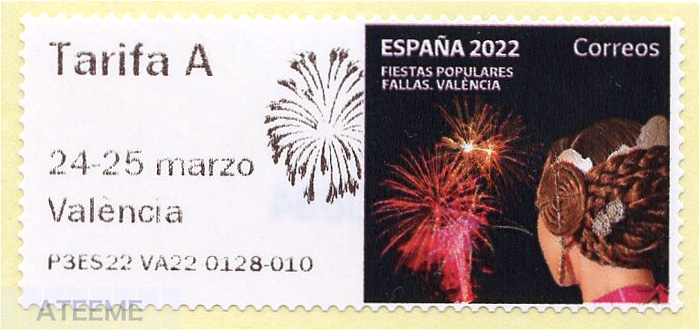
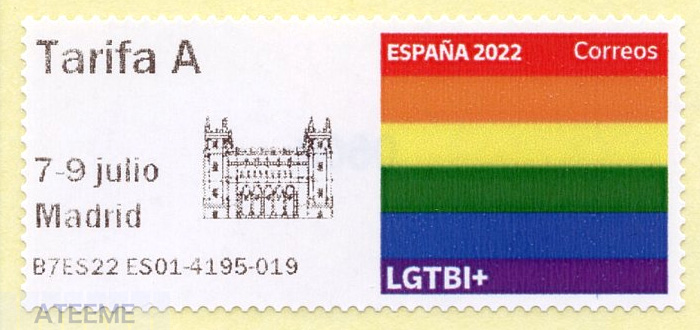
Sensitive to this situation, the Correos philatelic service has decided in 2025 to replace the direct thermal printers connected to its computer systems with six new Brother thermal transfer printers. These printers, which are larger and heavier than the direct thermal printers, are of two different models; the TD-4520TN, with a higher resolution (300 dpi) for printing stamps, and the TD-4420TN, which is slightly faster and has a lower resolution (203 dpi) for printing receipts.
These desktop printers are used at philatelic events with special codes, and also for printing orders and strips of stamps included in the annual presentation packs (MDCC permanent code).
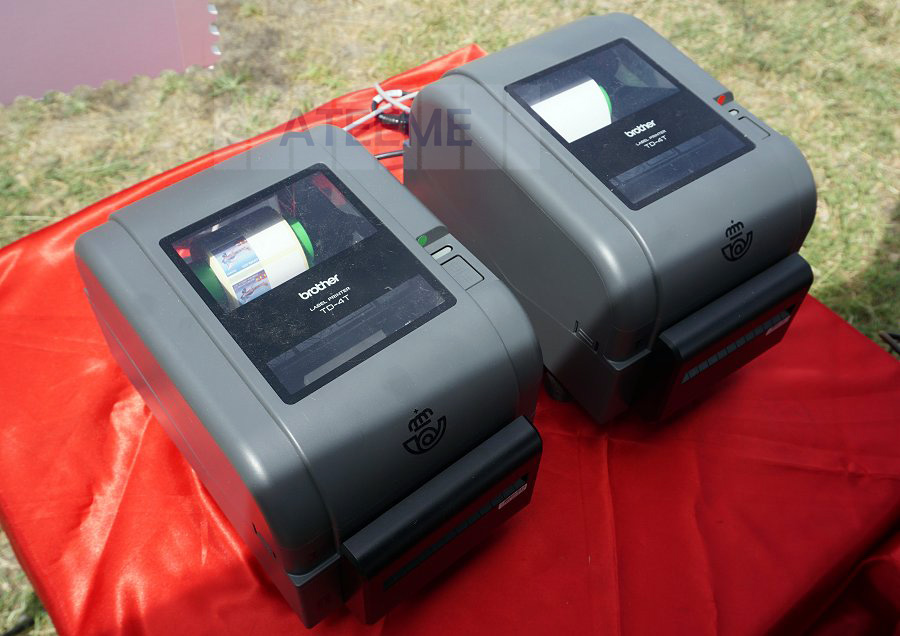
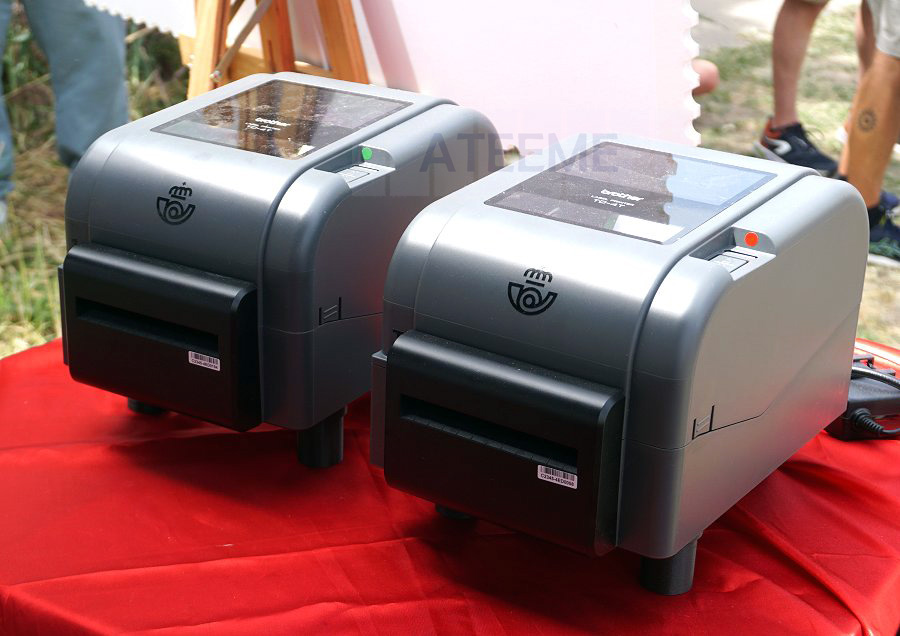
Thermal transfer printing uses a ribbon coated with wax or resin or a combination of both to transfer ink to paper. This system produces prints that are more stable and durable than direct thermal printing, without discolouration over the years, and is also more resistant to environmental factors, rubbing, humidity and ultraviolet light.
The new printers were used for the first time on June 1st 2025 at the Correos stand at the Cuatro Vientos air show for the special issue (see article and main picture). From this date, on all stamps and receipts will be printed with the new printers.
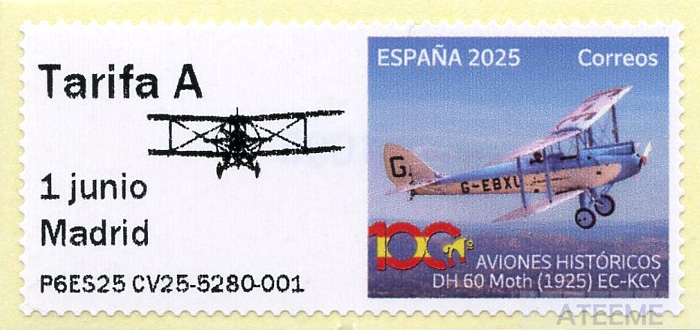
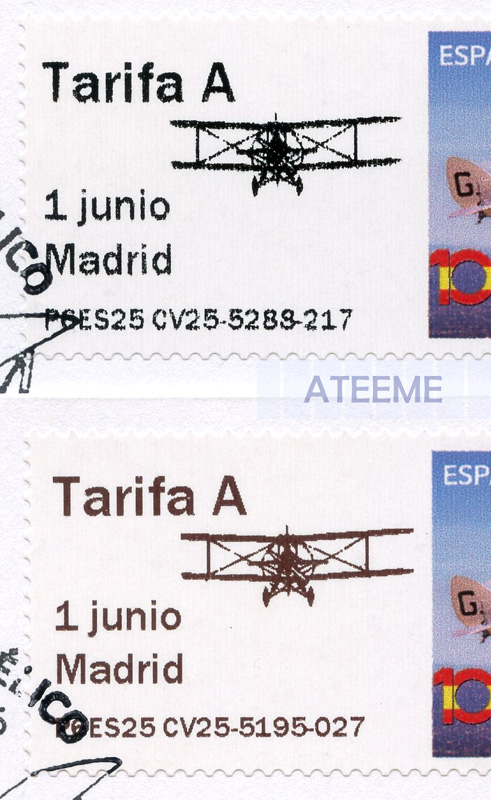
At first glance, the thermal transfer printing (left, top detail, and right receipt) appears to have a brighter and more intense degree of black than direct thermal printing (bottom detail, stamps used on covers and postcards, printed prior to the Cuatro Vientos event). The quality and resolution of the stamp printing is somewhat better even with direct thermal, possibly due to the type of thermal paper used.
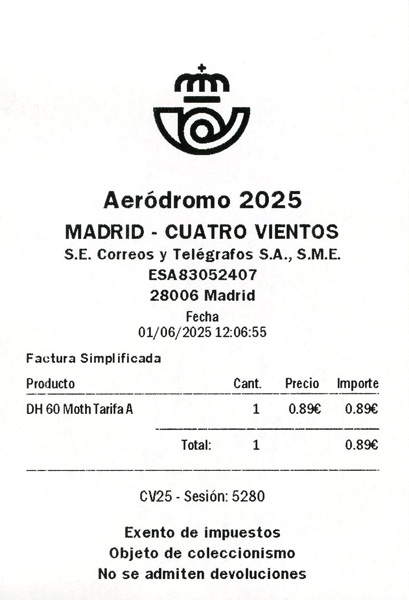
Without the problem of discolouration, stamps and receipts can be handled, preserved and displayed at exhibitions without fear of degradation. In the coming months, the philatelic service will continue to test the type of ribbon and possibly also different types of paper for future self-adhesive labels, in order to find the optimal combination for the best printing results … with perhaps a few “surprises” …
The ES01 postal kiosk, for its part, will continue to issue variable value stamps with its direct thermal printers; unfortunately, due to lack of space, it is impossible to replace them with thermal transfer printers.
(English edition rewritten by J. Gareze – June 2025)
Access to this site, and to the website in general, is monitored and its contents are protected by copyright.
The unauthorized copy of the text and / or images is prohibited
